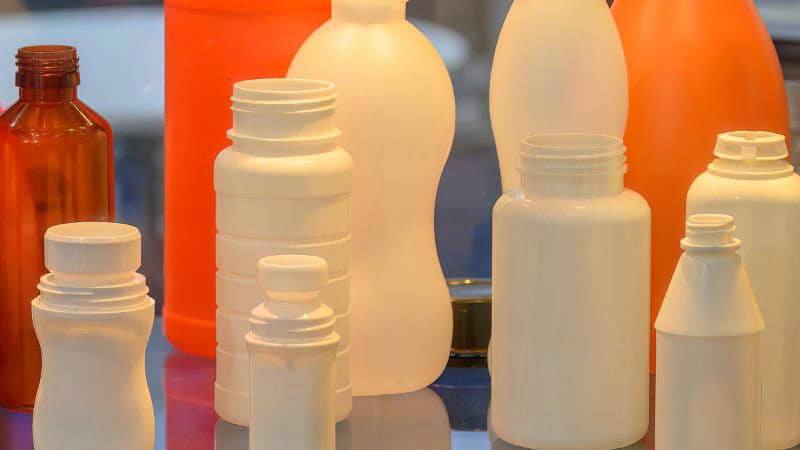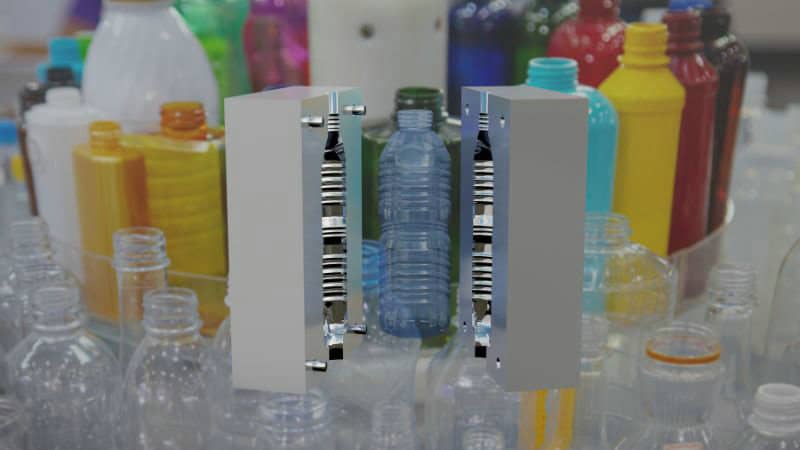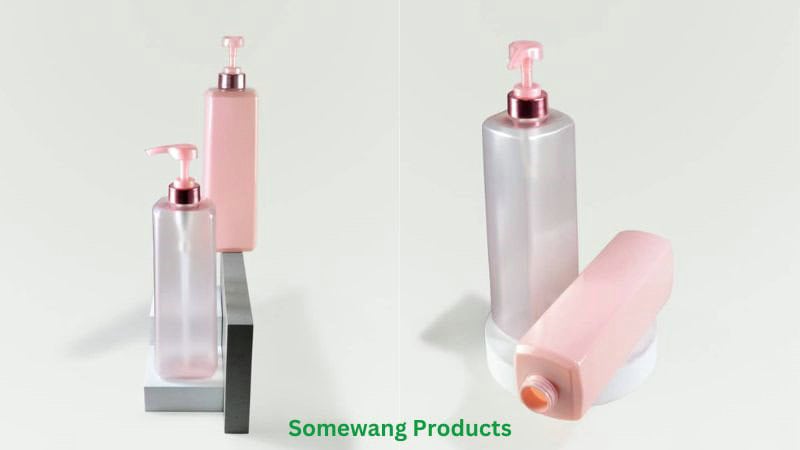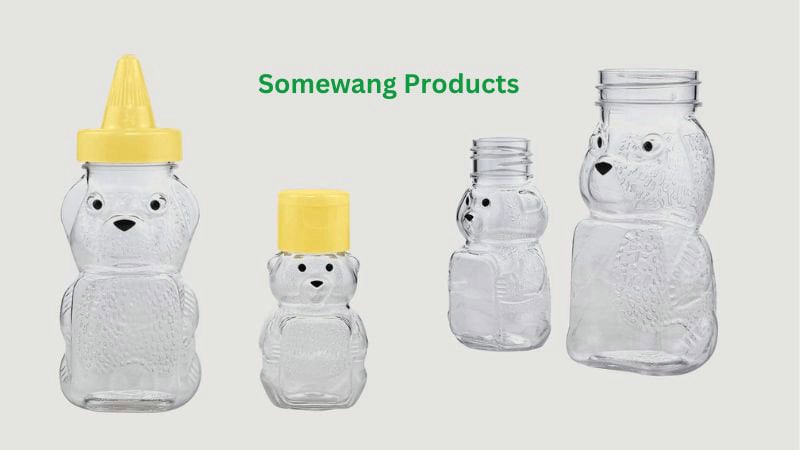
Among the various types of plastics, Polyethylene Terephthalate (PET) stands out for its exceptional versatility, durability, and clarity, making it a preferred choice for creating a wide range of customized bottles.
However, as consumer awareness about health and environmental sustainability grows, questions surrounding the safety of PET plastic have become increasingly prominent. Is PET plastic safe for everyday use, and what measures ensure its safety in customized packaging solutions? At Somewang, we prioritize both the safety and environmental impact of our products.
What is PET?
Polyethylene terephthalate, known as PET, has become a common material in your daily life, especially in packaging.
Properties of PET
PET plastic is known for being strong and lightweight. Here are some features that make PET stand out:
- Durability: PET is resistance to water and many other substances, which helps in preserving the quality of the products it contains.
- Clarity: It’s clear, letting you see the contents without opening the container.
- Recyclability: One of the key benefits of PET is its ability to be recycled. After it’s used, PET can be collected and processed into new PET containers or other products like plastic lumber or fabric.
The Production Process of PET Plastics
The production process of PET requires two main ingredients: ethylene glycol and terephthalic acid.
The two ingredients are combined through a chemical reaction called polymerization, which forms the PET polymer.
The resulting substance is then cooled and cut into small pellets, which are the raw material for making various PET products.
At last, these pellets are heated and molded into the final product, such as bottles for water or containers for your favorite foods.
Comparing PET with Other Plastics

When choosing plastics for everyday use, it’s important for you to know how PET stacks up against other types like HDPE, PVC, and PS.
PET vs. HDPE
Polyethylene Terephthalate (PET) is known for being a safe option for food and drink packaging. It doesn’t contain BPA and is widely recycled into new products like textiles and carpet fibers. PET is transparent and can handle being in both hot and cold environments, making it very user-friendly.
On the other hand, high-density polyethylene (HDPE) is a plastic often used for containers such as milk jugs and laundry detergent bottles. While also recyclable, HDPE differs from PET in its opacity; it isn’t usually clear. HDPE is known for its strength and resistance to chemicals which makes it great for holding household cleaners and soaps. However, unlike PET, it’s typically sturdier and can be reused more easily before recycling.
PET vs. PVC and PS
Unlike Polyvinyl Chloride (PVC), PET doesn’t release harmful substances during its production or disposal, making it a more environmentally friendly option. PVC, which is often used for construction materials and vinyl records, can be less safe during these processes and is less commonly recycled.
Polystyrene (PS), found in products like Styrofoam cups and take-out containers, offers less flexibility in recycling compared to PET. PS has been known to leach chemicals, especially when heated, making PET a better choice for your health and the environment.
What are We Worried About When We Talking About PET?
When considering PET plastic’s safety, two main factors to consider are the presence of certain chemicals in plastics and the regulatory standards that ensure your safety.
The FDA has determined that PET plastic is safe for food contact as long as it complies with the specified regulations.
While PET plastic is generally considered safe, it’s important for you to be aware of BPA (bisphenol A) and phthalates—two chemicals often discussed in relation to plastic safety.
BPA is a compound found in various plastics and resins, and it can leach into food and drinks. Studies have linked BPA exposure to health risks; hence, it is one of the reasons safe plastics are recommended.
PET Plastic in Cosmetic Packaging
PET plastic has become a cornerstone in the cosmetic packaging industry, celebrated for its versatile and advantageous properties.
One of the primary benefits of PET is its recyclability, which plays a crucial role in supporting sustainable packaging initiatives.
PET can be efficiently collected, cleaned, and reprocessed into new packaging materials, significantly reducing environmental impact. Additionally, PET’s lightweight and durable nature makes it an ideal choice for transporting and handling a wide range of cosmetic products, ensuring that items arrive intact and are easy for consumers to use.
Its exceptional clarity and aesthetics are particularly appealing for products like perfumes and nail polishes, as the transparency allows consumers to visually appreciate the product inside, enhancing the overall user experience.
Moreover, PET exhibits excellent chemical resistance, safeguarding the integrity and safety of cosmetic formulations by preventing interactions between the packaging and the product. This resistance ensures that the fragrances, colors, and active ingredients remain stable and effective over time.
In response to growing environmental concerns, the cosmetic industry is increasingly embracing recycled PET (rPET). By utilizing rPET, companies are not only minimizing their carbon footprint but also promoting a circular economy where materials are reused and repurposed, thereby conserving natural resources and reducing waste.
Somewang PET Cosmetic Packaging
PET Bottle with Pump Sprayer for Shampoo

Engineered for both functionality and durability, this large-capacity bottle is perfect for storing and dispensing shampoos, lotions, and other personal care products with ease and reliability.
Key Features:
- Robust PET Material: Constructed from high-quality Polyethylene Terephthalate (PET) plastic, this bottle offers exceptional strength and durability while remaining lightweight for easy handling.
- Convenient Pump Sprayer: The integrated pump sprayer ensures smooth and controlled dispensing, allowing for precise application without any mess or waste.
- Leak-Proof Design: Engineered to prevent leaks and spills, this bottle is ideal for both home use and travel, ensuring your products remain secure and intact.
- Versatile Usage: Suitable for a wide range of personal care products, including shampoos, conditioners, body washes, lotions, and more, making it a versatile addition to any bathroom or personal care routine.
PET Cosmetic Body Butter Jars

Preserve the richness of your favorite body butters and creams with the 250ml PET Cosmetic Body Butter Jars with Lids from Somewang.
Key Features:
- Sleek PET Construction: Made from high-quality Polyethylene Terephthalate (PET) plastic, these jars are both durable and lightweight, ensuring easy handling and longevity.
- Secure Lids: Each jar comes with a tight-fitting lid to keep your products fresh and prevent any accidental spills or contamination.
- Easy Access: The wide-mouth opening facilitates effortless application and refilling, ensuring a smooth and convenient user experience.
- Versatile Use: Perfect for both personal use and professional settings, these jars are suitable for home bathrooms, salons, spas, and beauty boutiques.
ET bear shape squeeze bottle

Add a playful touch to your cosmetic collection with the 45ml & 120ml PET Bear Shape Squeeze Bottle from Somewang. Perfectly blending functionality with adorable design, these bear-shaped bottles are ideal for storing and dispensing your favorite beauty products with ease and style.
Key Features:
- Adorable Bear Design: The cute bear shape not only enhances the aesthetic appeal but also makes these bottles a delightful addition to any vanity or bathroom shelf.
- Premium PET Material: Crafted from high-quality Polyethylene Terephthalate (PET) plastic, these bottles are lightweight, durable, and environmentally friendly, ensuring long-lasting use.
- Easy Dispensing: The flexible squeeze design allows for controlled and mess-free application, making it simple to use your favorite products without waste.
- Leak-Proof Seal: Equipped with secure lids to prevent accidental spills and maintain the integrity of your cosmetics during storage and transportation.
Frequently Asked Questions
Is it safe if I drink too much bottled water?
Consuming too much bottled water—or any water—can lead to potential health risks.
How do I know if PET plastic is safe for food containers like beverages?
PET plastic, labeled with the recycling number 1, passes rigorous U.S. Food and Drug Administration (FDA) testing to ensure it’s safe for food contact. Your food containers made from PET are widely considered safe for holding your snacks and meals.
Can PET plastic water bottles or juice bottles be safely reused without health effects?
Yes, you can reuse PET bottles. They are known for being chemically resistant and inert, meaning they don’t easily react with the liquids inside. Just make sure to clean them properly between uses to maintain hygiene.
Is it safe to store hot liquids in PET plastic containers?
Storing hot liquids in PET containers isn’t recommended. PET is designed for room temperature or cooler liquids, and hot liquids might degrade the plastic or cause it to warp.
Are there any health risks associated with using PET plastic for drinking water?
PET plastics are inert and don’t leach harmful substances when used properly. Drinking water from a PET plastic bottle is generally safe. However, always store and use the bottles as per the manufacturer’s guidelines.
What distinguishes PET plastic as safe compared to other types of plastics?
PET plastic is unique for its strength, chemical resistance, and ability to be recycled effectively. Its safety comes from passing FDA guidelines and being an inert material that doesn’t easily release substances into its contents.
